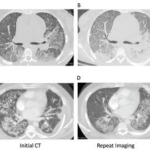
This month we’re going to look at the literature through the lens of that childhood game of “animal, vegetable, or mineral” (having 20 questions to guess which), and some thoughts about relocating to Southern California (I’ve no idea what category that would belong to).
Animal…
One of the strengths of rheumatology here at the University of Southern California (USC) is our division chief, Billy Stohl, MD, and the excellence of his science. His interest focuses on the etiopathogenesis of lupus and translating understandings from animal models to better care of our patients. Certain recent observations by him and his colleagues were recently discussed at one of our conferences and just appeared in the literature.1 These were an elegant, complex, and kind of arcane series of experiments. The studies were designed to probe of the role of interferon alpha (IFN-a) in driving or sustaining disease in the context of B-cell or B-cell activating factor (BAFF) deficiency. This is relevant because of the ability of therapeutic agents in use or in clinical trials to deplete B cells or neutralize BAFF. The studies by Stohl and colleagues found that IFN-a promoted virulent lupus in genetically predisposed mice, and that disease was largely absent in strains deficient in B cells or BAFF. Other findings suggested that IFN-a–related exaggerated disease in certain mice may reflect B cells and/or the innate immune system more than T cells. For clinicians this means that even if IFN-a is overexpressed, it may still be possible to successfully treat lupus patients by targeting BAFF or B cells.
Animals of a Different Stripe
I’m writing this on June 30. That means the new residents (and fellows) begin tomorrow. It’s an exciting time. I recall, from my day, the admonition, “Never go to a hospital in July.” It was common knowledge that this was a dangerous time. Care and outcomes would suffer from the inexperienced new residents at teaching hospitals. That was the widespread perception. But, was it true? It turns out, the answer seems to be “maybe.”2,3 (I thought it would be fun and timely to mention this adage at this particular time—and it fits in my “animal” category for this column. The game of 20 questions to identify an “animal, vegetable, or mineral” included all living things, and residents are categorized, despite their duress during internship, as “animals.”)
Several studies addressed this “July phenomenon” in the 1980s and 1990s, mostly not finding a poor outcome at teaching hospitals during the month when trainees start. A good summary study and paper found no increase in ICU mortality or hospital length of stay from July through September in major or minor teaching or nonteaching hospitals.2 A report from 2010, however, found a significant spike in fatal medication errors during July (but not overall deaths).3
